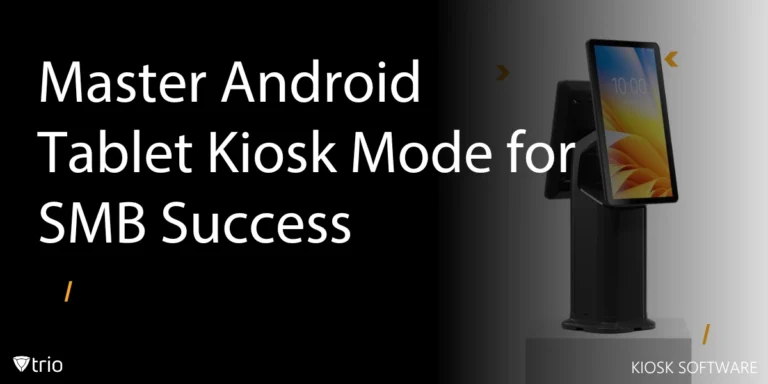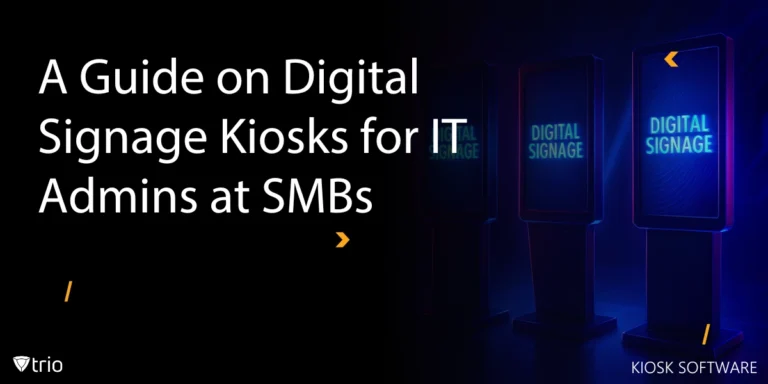In today's dynamic business landscape, organizations harness technology to optimize their HR operations. A significant technological advancement in this realm is HRIS integration, which seamlessly merges HR systems with enterprise software, thereby streamlining processes and enhancing efficiency. According to a paper published in 2013, “HRIS significantly enhances overall organizational efficiency and its sub-dimensions (HR functions, time management, cost management and managerial satisfaction with the system).” This comprehensive guide explores various aspects of HRIS integration, including understanding its fundamentals, uncovering its benefits, implementing best practices, exploring integration options, and examining common integration examples.
Understanding HRIS Integration
HRIS integration involves connecting Human Resources Information Systems (HRIS) and other software, tools, or systems within an organization to exchange data seamlessly, process automation, and improve efficiency. By integrating HRIS with systems such as payroll, administration, time and attendance, and recruitment, organizations can centralize HR data, eliminate manual work, improve data accuracy, and enhance decision-making capabilities.

Benefits of HRIS Integration
HRIS data integration brings various benefits to your organization. Below some key advantages are listed.
Enhanced Efficiency and Accuracy
HRIS integration revolutionizes HR task management, enhancing efficiency and accuracy. Leveraging different HR systems eliminates data inconsistencies, ensuring there's only one reliable source for employee information. Consequently, data stays up-to-date across the organization in real-time, reducing the likelihood of human errors and bolstering data integrity and trustworthiness. Additionally, HR staff can now redirect their focus to important tasks instead of being occupied with manual work, thanks to the integration's time-saving features. Furthermore, integration streamlines processes, cutting out redundant tasks and manual data input, making everything run smoother.
Enhanced Customer and Employee Experience
HRIS integration offers dual benefits by enhancing both employee and customer experiences. By eliminating the need for employees to engage in repetitive data entry tasks between applications, it frees their time to focus on tasks aligned with their interests and strengths, ultimately enabling a happier and more productive workforce. Together, integrating HRIS with your product enables seamless synchronization of employee data, ensuring timely user provisioning, accurate permissions assignment, and the initiation of appropriate workflows for each user individually. This streamlined process results in increased client satisfaction and engagement, leading to higher renewal rates and potentially greater investment in your offerings.
Better Decision-Making
The integration of HRIS offers significant benefits for organizations, particularly in enhancing decision-making processes. Real-time access to HR data and analytics empowers stakeholders to make informed decisions and engage in strategic workforce planning initiatives. By leveraging data-driven insights, organizations can discern trends, evaluate performance, forecast workforce requirements, and implement HR strategies that align effectively with broader business objectives.
Streamlined Workflows
HRIS integration delivers streamlined processes as a significant benefit for organizations. Automated workflows facilitate faster and more efficient HR operations, from recruitment to onboarding, payroll system processing, and performance management. Through seamless integration, information flows harmoniously across different systems, enhancing the efficiency of HR workflows. Key data, including employee onboarding details, timesheets, and leave requests, are automatically updated and shared between systems in real-time. This accelerates HR processes while minimizing administrative delays, ensuring timely responses, and ultimately improving employee experiences.
Best Practices to Implement an HRIS
Successful integration requires careful planning and adherence to best practices to ensure optimal outcomes. Below are key best practices to guide organizations through the HRIS integration process effectively.
Define Integration Objectives
Begin by clearly outlining the goals and objectives of HRIS integration. Ensure these objectives are aligned with the overall business strategy and objectives. This clarity will provide a roadmap for the integration process and help in measuring its success against predefined criteria.
Assess Data Requirements
Identify the types of HR data that need to be integrated. This includes employee records, payroll systems, benefits data, and more. Ensure compatibility and consistency across systems to prevent data discrepancies and ensure seamless integration.
Choose the Right Integration Platform
Select integration tools and platforms that support seamless data exchange, scalability, security, and compliance. Evaluate different integration solutions to find the one that best fits your organization's needs and can accommodate future growth.
Ensure Stakeholder Buy-In
Engage key stakeholders from various departments, including HR, IT, finance, and department heads, to gain support and collaboration throughout the integration process. Ensure that all stakeholders understand the benefits of integration and are committed to its success.
Conduct Testing and Training
Thoroughly test integrated systems for functionality and data accuracy before deployment. This includes testing data exchange processes, workflow automation, and user access controls. Additionally, provide comprehensive training to end-users to ensure adoption and proficiency with the integrated systems.

Options for Integrating Your HRIS
When considering options for integrating your HRIS (Human Resources Information System), several approaches can be explored to ensure seamless connectivity and efficient data exchange across your organization's systems. These integration options include:
1) Pre-built Integrations
Many HRIS platforms offer pre-built integrations with commonly used software solutions such as payroll systems, benefits administration platforms, time and attendance tracking tools, and applicant tracking systems (ATS). These integrations are often plug-and-play, requiring minimal setup and configuration.
2) Custom Integrations
For organizations with unique requirements or systems not supported by pre-built integrations, custom integrations can be developed. This involves working with developers or integration specialists to create tailored connections between your HRIS and other internal or external systems.
3) API Integrations
Most modern HRIS platforms provide Application Programming Interfaces (APIs) that allow developers to build custom integrations or connect with third-party applications. APIs enable seamless data exchange and real-time synchronization between systems, providing flexibility and scalability for integration projects.
4) Middleware Solutions
Middleware solutions act as intermediaries between different systems, facilitating data communication and translation. These platforms often offer pre-built connectors for popular HRIS and other business applications, simplifying the integration process and reducing development time.
5) Integration Platforms
Integration platforms provide comprehensive tools and workflows for connecting and automating processes between multiple systems. These platforms offer a range of features such as drag-and-drop interface, workflow orchestration, and data mapping capabilities, making it easier to build and manage integrations without extensive coding knowledge.
6) Hybrid Integrations
In some cases, a combination of pre-built, custom, and middleware integrations may be needed to meet all of an organization's integration requirements. A hybrid integration approach allows organizations to leverage the strengths of different integration methods to achieve their specific goals.
Common Examples of HRIS Integrations
Different types of HRIS integration offer tailored solutions to streamline various aspects of HR operations, ensuring efficiency, accuracy, and compliance. Here are some common examples of HRIS systems:
1) Payroll Integration
Integrating HRIS with payroll software facilitates the seamless processing of employee salaries, taxes, and benefits. This integration ensures compliance with regulatory requirements while enhancing payroll accuracy and efficiency.
2) Benefits Integration
Integration with benefits administration systems simplifies the management of employee benefits, including healthcare, retirement plans, and leave policies. By centralizing benefit management, organizations can improve employee satisfaction and ensure compliance with benefits regulations.
3) Time and Attendance Integration
Integrating HRIS with time and attendance systems automates the tracking of employee work hours, absences, and overtime. This integration enables accurate payroll processing, compliance with labor regulations, and efficient workforce management.
4) Recruitment Integration
The integration of an HR data system with applicant tracking systems (ATS) streamlines the recruitment process by syncing candidate data, job postings, and hiring workflows. This integration enhances recruitment efficiency, reduces time-to-hire, and improves the overall candidate experience.
5) Performance Management Integration
Integrating HRIS with performance management software enables the tracking of employee goals, evaluations, feedback, and development plans. This integration fosters employee growth, productivity, and engagement by providing insights into performance metrics and facilitating continuous feedback and development.
Conclusion
HRIS integration significantly benefits organizations by optimizing HR processes, enhancing data accuracy, and supporting decision-making. Seamless system connection streamlines workflows and improves the employee experience, requiring careful planning and collaboration for success. Trio is a Mobile Device Management (MDM) solution used to streamline HR and IT operations. It offers comprehensive integration, enabling seamless connectivity with HRIS platforms. By leveraging Trio for integration, you can optimize the efficiency of your HR operations by consolidating data management into a centralized hub. Use Trio’s free demo to easily integrate HRIS platforms align side other third parties including Single Sign-On (SSO) identity management services, Active Directories, and security protocols.
Get Ahead of the Curve
Every organization today needs a solution to automate time-consuming tasks and strengthen security.
Without the right tools, manual processes drain resources and leave gaps in protection. Trio MDM is designed to solve this problem, automating key tasks, boosting security, and ensuring compliance with ease.
Don't let inefficiencies hold you back. Learn how Trio MDM can revolutionize your IT operations or request a free trial today!





